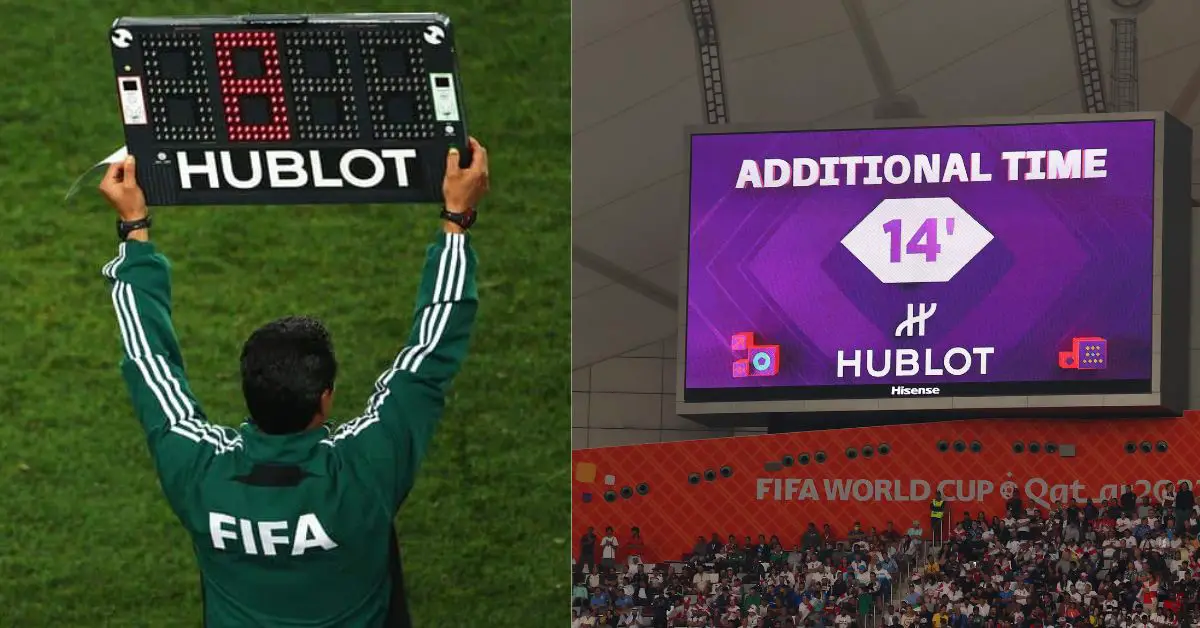Soccer games are known for their intense battles on the field. In many matches, the final outcome isn’t decided within the regulation 90 minutes of play.
This is where Extra Time comes into play. Some soccer fans may find the abbreviation AET on the scorecard and wonder, what does AET mean in soccer?
In this article, we will delve into the meaning of AET in soccer, how long it lasts, and what happens after AET in the world of football.
Explaining AET
AET is an abbreviation for “After Extra Time,” used to denote the scoreline on the scorecard or scoreboard to indicate that the given scoreline was achieved after playing the Extra time.
Extra time is a crucial phase in soccer matches in knockout competitions like the FIFA World Cup, UEFA Champions League, and domestic cup competitions.
How Long Is Extra Time in Soccer?
Extra Time is the period of play that follows the conclusion of the regulation 90 minutes when the score remains tied between two teams. It serves as an extension of the match, offering both teams an opportunity to break the deadlock.

Typically, Extra Time consists of two halves, each lasting 15 minutes, making a total of 30 additional minutes of play.
It’s worth noting that there is no sudden-death rule in Extra Time, meaning that the match continues even if a team scores during this period. The full 30 minutes are played regardless of any goals scored. The sudden death or Golden Goal rule was abolished from official FIFA matches in Euro 2004.
What Happens After Extra Time (AET)?
Let’s explore what happens after this additional playing time. The main objective of ET is to determine a winner. In case the score is still tied after the 30 extra minutes.
If neither team manages to break the tie during ET, the match is usually decided by a penalty shootout. Each team selects five players to take penalty kicks alternately to be taken from the penalty box, and the team with the most goals at the end of these five kicks wins.
If the score remains tied after this initial round of five penalties, the shootout continues in a sudden-death format. It is continued until a winner is determined.
In March 2022, an extraordinary moment occurred in soccer. Two non-league teams, Washington and Bedlington, hailing from the northeast of England, engaged in a marathon penalty shootout that set a new world record. Washington emerged victorious with a remarkable scoreline of 25-24.
⚽️⚽️ CUP PROGRESS ⚽️⚽️
— Washington FC (@washyfc) March 10, 2022
We eventually managed to secure victory last night in the Ernest Armstrong @theofficialnl Cup
The game ended 3-3 before the drama of Penalties……
⚽️⚽️⚽️ Brad Chisholm
We then won 25-24 on pens 😳
In January 2022, another memorable shootout took place between Liverpool and Chelsea. The Mighty Reds, Liverpool beat the Blues 11-10 on penalties in the Carabao Cup final. All 22 players took a penalty in the shootout.
FAQs
AET is an abbreviation for “After Extra Time.” It is used to denote the scoreline on the scorecard or scoreboard to indicate that the given scoreline was achieved after playing the Extra time.
If neither team manages to break the tie during ET, the match is usually decided by a penalty shootout. Each team selects five players to take penalty kicks. They are taken alternately from the penalty box. The team with the most goals at the end of these five kicks wins.
There is no sudden-death rule in Extra Time. It means that the match continues even if a team scores during this period. The full 30 minutes are played regardless of any goals scored. The sudden death or Golden Goal rule was abolished from official FIFA matches in Euro 2004.











